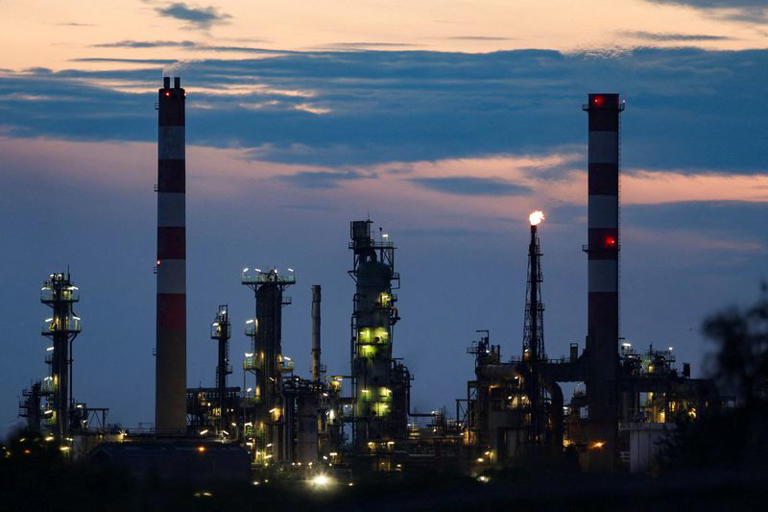Oil prices remained relatively stable on Thursday, showing a modest increase despite recent fluctuations. Brent crude futures, a key benchmark, edged up by 25 cents or 0.3% to reach $78.66 a barrel, while U.S. West Texas Intermediate crude futures rose by 31 cents or 0.4% to $74.38. This stability came amidst a backdrop of growing anticipation for an interest rate cut from the U.S. Federal Reserve in September, which helped offset concerns over higher U.S. inventories and plans by the OPEC+ alliance to gradually increase oil supply.
After experiencing a notable decline of nearly $8 a barrel over the previous five sessions, oil benchmarks saw a modest recovery of more than 1% on Wednesday. The market sentiment received a boost from the prevailing expectation of a potential interest rate cut in September. This sentiment was reinforced by a Reuters poll conducted between May 31 and June 5, which indicated that approximately two-thirds of economists were predicting such a move.
Lower interest rates typically translate to reduced borrowing costs, which can stimulate economic activity and subsequently boost oil demand. Despite this positive sentiment, however, oil prices remained on track for weekly declines of over 3%.
According to Saad Rahim, chief economist at Trafigura, the recent downward pressure on oil prices can be attributed to the decision made by the OPEC+ alliance to gradually phase out some of its output cuts starting from October. This decision, combined with robust supply in the products market, contributed to the downward trend.
The agreement reached by OPEC+ on Sunday to extend most of their production cuts into 2025, with provisions for voluntary cuts to be gradually unwound by eight members, has had a significant impact on market dynamics. OPEC Secretary General Haitham Al Ghais and Russian Deputy Prime Minister Alexander Novak expressed optimism about the continued strong demand for oil.
While some analysts suggested that oil markets may have overreacted to the mildly negative outcome of the OPEC+ meeting, concerns remain. Data from the U.S. Energy Information Administration showed a surprising increase in U.S. crude stocks by 1.2 million barrels for the week ending May 31, contrary to analysts’ expectations of a drawdown of 2.3 million barrels.
Looking ahead, J.P.Morgan analysts projected that summer inventory draws could potentially push Brent oil prices back into the high $80s to $90 range by September. However, they cautioned that prices could face downward pressure in 2025 due to slower demand growth and increased non-OPEC supply. J.P.Morgan forecasted Brent to average $83 per barrel this year and $75 per barrel next year.
The oil market remains influenced by a complex interplay of factors, including supply dynamics, economic trends, and geopolitical developments, all of which continue to shape price movements and market sentiment.
